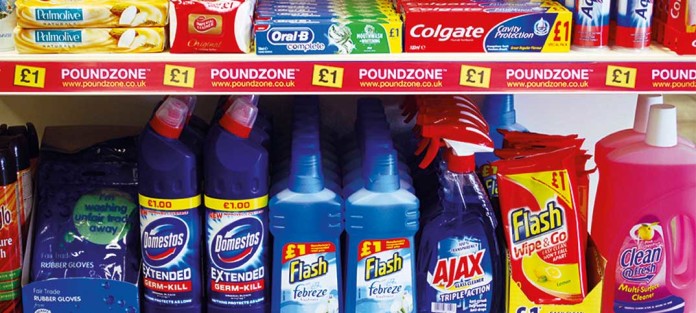Price-marks give consumers confidence but must be used strategically, reports Tan Parsons.
Ever since wholesalers introduced price-marking in the 1980s, it has been a brilliant tactic for advertising the value on offer in the convenience channel. Today, it remains a key weapon for independent stores fighting their corner against the multiple grocers. But is the industry now getting its price-marking strategy wrong?
There is no question of price-marks being ineffective. At Bestway the top-selling products across all the major product categories are price-marked variants. In the group’s soft drinks category, 18 of the 20 best-selling SKUs are price-marked.
But there is a dilemma, says Bestway’s group trading director Martin Race (pictured). “What we are seeing – and sadly it is increasing – is that price-marks are being used by manufacturers to convey the suggested retail price rather than as a tactical promotional tool,” he said.
“By using price-marking as an everyday price point, manufacturers are limiting themselves to promotions with all that’s left being margin-eroding ‘two for…’, ‘three for…’ or ‘x cases for £y’ deals.”
He cites a recent example of two major manufacturers increasing their price-marks from £1 to £1.29 without consulting wholesalers or retailers. These products, which were big sellers at £1, are now selling a fraction of the volume, with consumers able to buy cheaper elsewhere.
He said: “We are now at a crossroads in price-marking. Over the years, we have all seen the advantages to our businesses, but there is now the fear that price-marking in independents is no longer giving value in comparison to multiples and discounters, where £1 is the ubiquitous price.
“The argument for price-marked packs is that of ‘reduced margins but more sales’. We are getting to a place where the dynamic is changing to ‘more margin but reduced sales’. Once you step over that elasticity of 10% between convenience and multiples in pricing, price-marks are no longer viable, as consumers will vote with their feet and purchase from other channels.”
Currently, consumers can buy the exact same product price-marked at significantly different price points in convenience and discount stores, a fact highlighted in our January edition by former Bestway operations director David Gilroy.
At the Today’s Group, all own-label lines are price-marked, with the exception of water. “There are a lot of £1-priced products in the market now, driven from the discount channel, and the convenience channel has responded well to meet consumers’ expectations,” said Today’s Group retail director John Kinney.
However, he warned that there is a balance to be struck. Set prices too low and they will not deliver an appropriate shared margin – compromising the ability to further promote them. On the other hand, set prices too high and they will do more damage than good.
The popularity of price-marking with consumers is reflected in consumer research: 41% of convenience shoppers want clearer pricing and 86% say they would trust a price-mark over the price on the shelf, according to Him!. Landmark Wholesale considers price-marks an essential part in its armoury. But managing director Martin Williams says the market is in danger of becoming saturated with price-marked goods; suppliers have a choice to make.
He says: “The challenge for suppliers is to decide how they use price-marked packs to best effect – as an ongoing selling mechanism or as a short-term price promotion, which when it’s gone, it’s gone. They need to consider which works best for their brands.
“Whichever option they choose, they need to cautiously determine the correct price levels to ensure they still deliver margins for the retailer. This will ensure products take their places on retailers’ shelves.”








